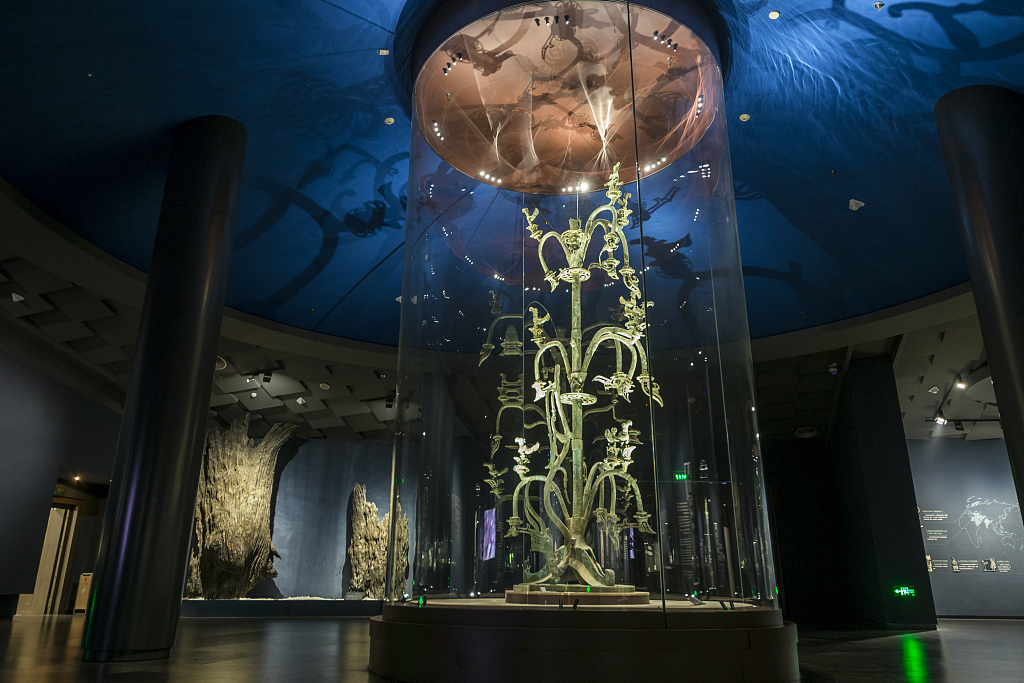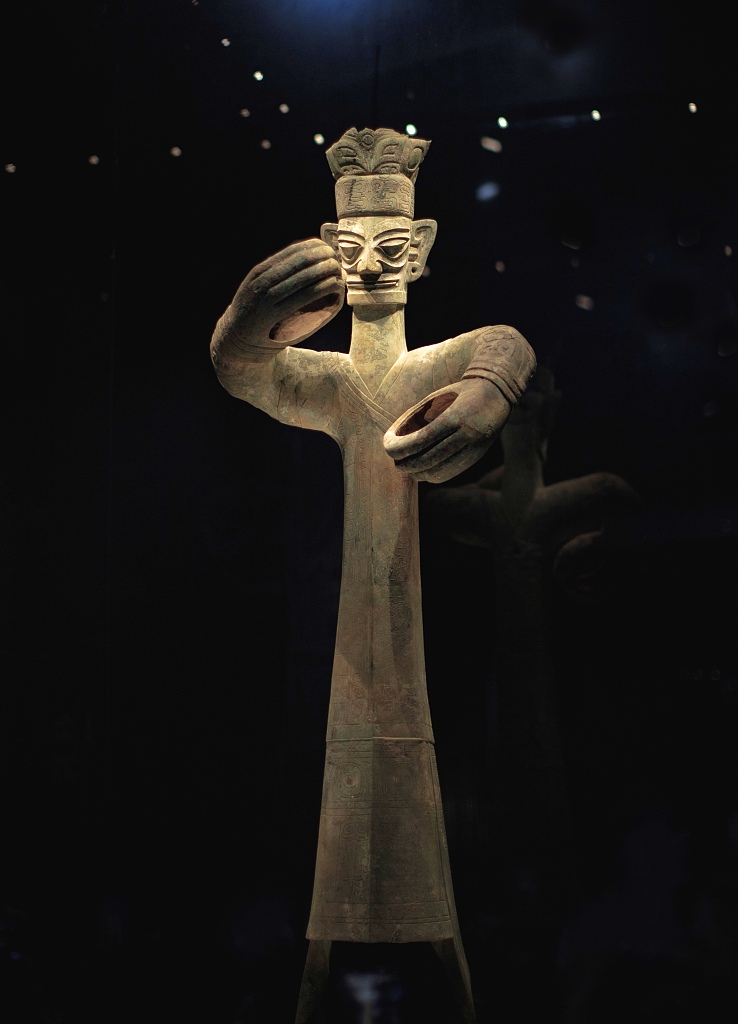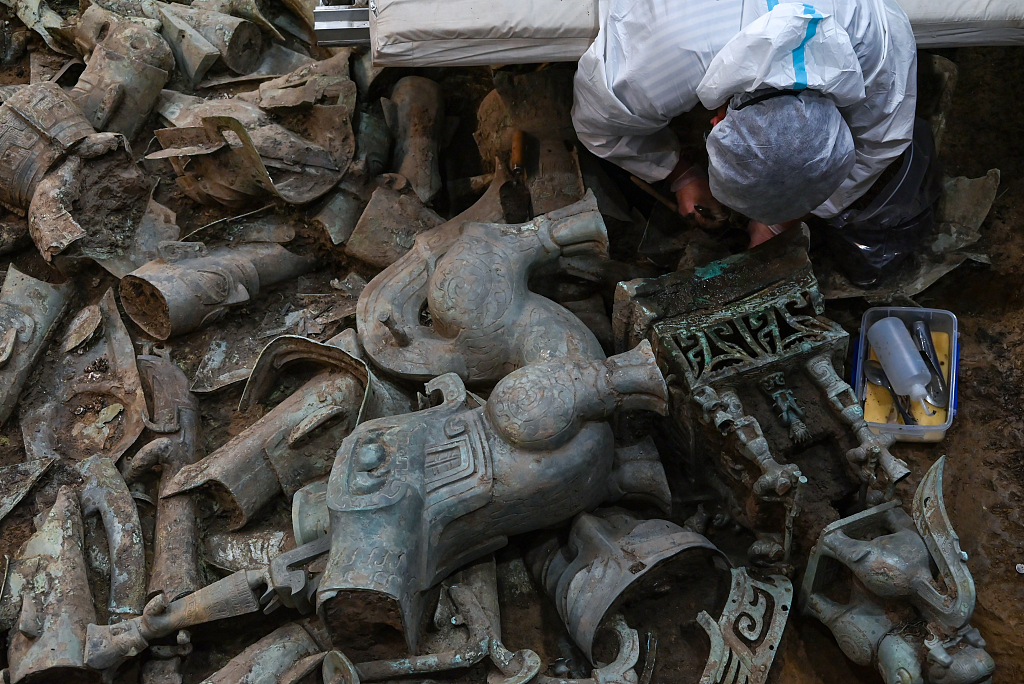
The Sanxingdui Museum in Guanghan, Sichuan Province, China. /CFP
The Sanxingdui Museum in Guanghan, Sichuan Province, China. /CFP
The Sanxingdui Museum, which is set to open a new exhibition hall on July 28, has recently seen a surge in visitor numbers. During the recent Labor Day holiday period, nearly 100,000 visitors flocked to the site. With such a high level of interest, many are wondering what exactly this museum has on display that's attracting so many visitors.
Located in Guanghan, Sichuan, Sanxingdui was once a site with three seemingly unremarkable mounds. However, in 1929, a farmer who was digging a ditch near the area discovered several jade objects. When archaeologists investigated further, they realized that the three mounds were arranged in a straight line, resembling three stars on a map. This led to the name "Sanxingdui," which translates to "Three-Star Piles."

The bronze sacred tree on display at the Sanxingdui Museum in Guanghan, Sichuan Province, China. /CFP
The bronze sacred tree on display at the Sanxingdui Museum in Guanghan, Sichuan Province, China. /CFP
In 1986, the discovery of two sacrificial pits – pit 1 and 2 – made Sanxingdui famous worldwide. A large number of bronze statues were unearthed, most of which were types of artifacts never before discovered in China.
Among them were unique and huge objects, such as an exaggerated vertical-eyed mask, a tall bronze standing figure, and a peculiar "sky-reaching" bronze sacred tree, making Sanxingdui significant in its revelations of the Bronze Age civilization (about 4000 BC –1 AD). It is known as "one of the greatest archaeological discoveries of the 20th century."

The bronze standing figure on display at the Sanxingdui Museum in Guanghan, Sichuan Province, China. /CFP
The bronze standing figure on display at the Sanxingdui Museum in Guanghan, Sichuan Province, China. /CFP
Since 2020, archaeologists have discovered six sacrificial pits next to pits 1 and 2. The incomplete gold mask unearthed from pit 5 is about 23 cm wide, 28 cm high, and weighs about 280 grams, making it the largest gold mask from the Shang Dynasty (1600-1046 BC) discovered in China.

The Sanxingdui archaeological site in Guanghan, Sichuan, on June 22, 2022. /CFP
The Sanxingdui archaeological site in Guanghan, Sichuan, on June 22, 2022. /CFP
From June 13 to 15, 2022, a three-day live broadcast was held at the Sanxingdui archaeological excavation site. Over 10 million viewers witnessed the first excavation process of some heavyweight cultural relics from pits 7 and 8, including a turtle-backed mesh-like bronze ware, a complex bronze altar and a human-head, snake-body and bird-claw figure statue.
With distinctive regional characteristics and a complex cultural landscape, the Sanxingdui site proves the true existence of the ancient Shu civilization in history – a civilization dating back at least 4,800 years in southwest China's Sichuan Province.